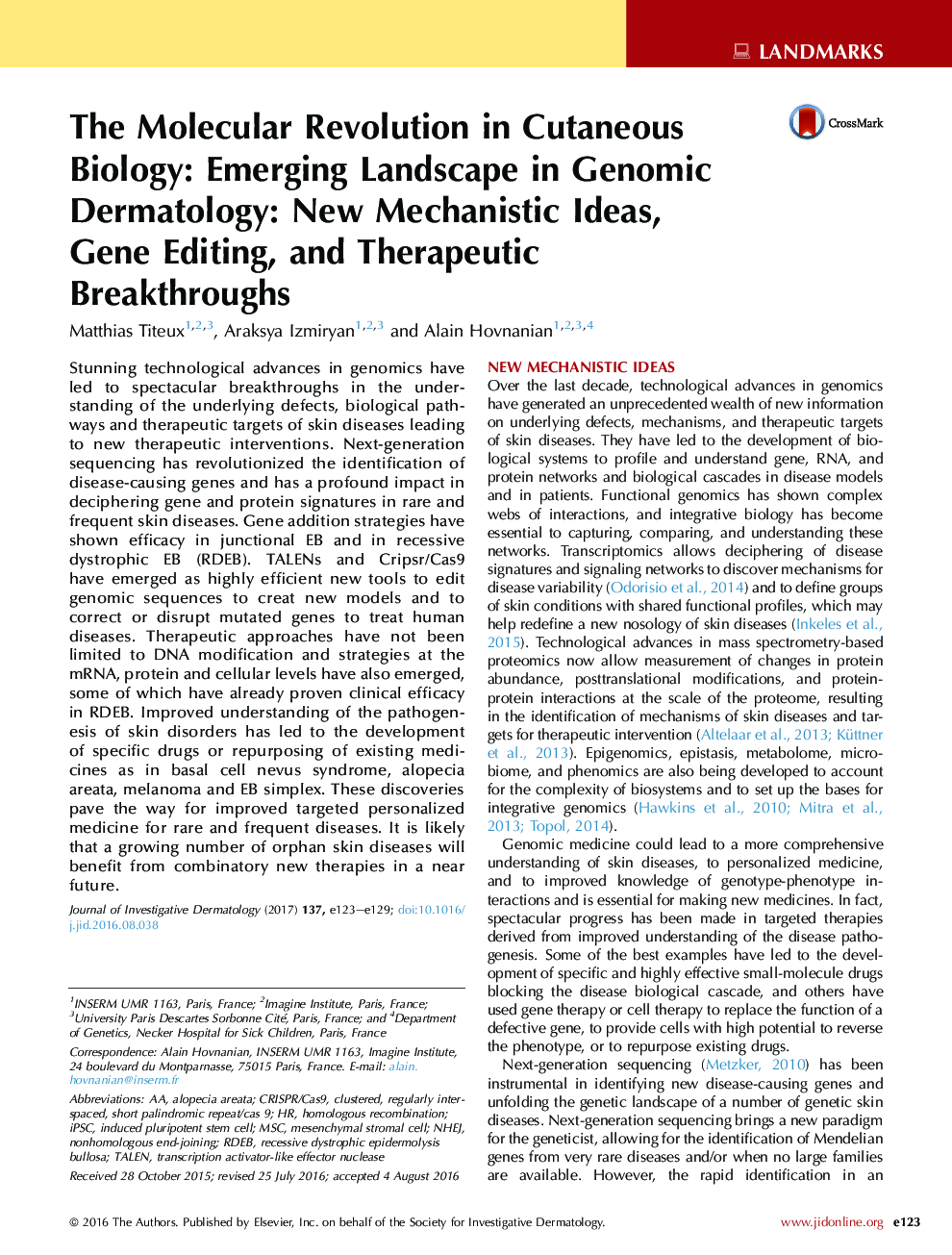| Article ID | Journal | Published Year | Pages | File Type |
|---|---|---|---|---|
| 5649506 | Journal of Investigative Dermatology | 2017 | 7 Pages |
Abstract
Stunning technological advances in genomics have led to spectacular breakthroughs in the understanding of the underlying defects, biological pathways and therapeutic targets of skin diseases leading to new therapeutic interventions. Next-generation sequencing has revolutionized the identification of disease-causing genes and has a profound impact in deciphering gene and protein signatures in rare and frequent skin diseases. Gene addition strategies have shown efficacy in junctional EB and in recessive dystrophic EB (RDEB). TALENs and Cripsr/Cas9 have emerged as highly efficient new tools to edit genomic sequences to creat new models and to correct or disrupt mutated genes to treat human diseases. Therapeutic approaches have not been limited to DNA modification and strategies at the mRNA, protein and cellular levels have also emerged, some of which have already proven clinical efficacy in RDEB. Improved understanding of the pathogenesis of skin disorders has led to the development of specific drugs or repurposing of existing medicines as in basal cell nevus syndrome, alopecia areata, melanoma and EB simplex. These discoveries pave the way for improved targeted personalized medicine for rare and frequent diseases. It is likely that a growing number of orphan skin diseases will benefit from combinatory new therapies in a near future.
Keywords
Related Topics
Health Sciences
Medicine and Dentistry
Dermatology
Authors
Matthias Titeux, Araksya Izmiryan, Alain Hovnanian,
